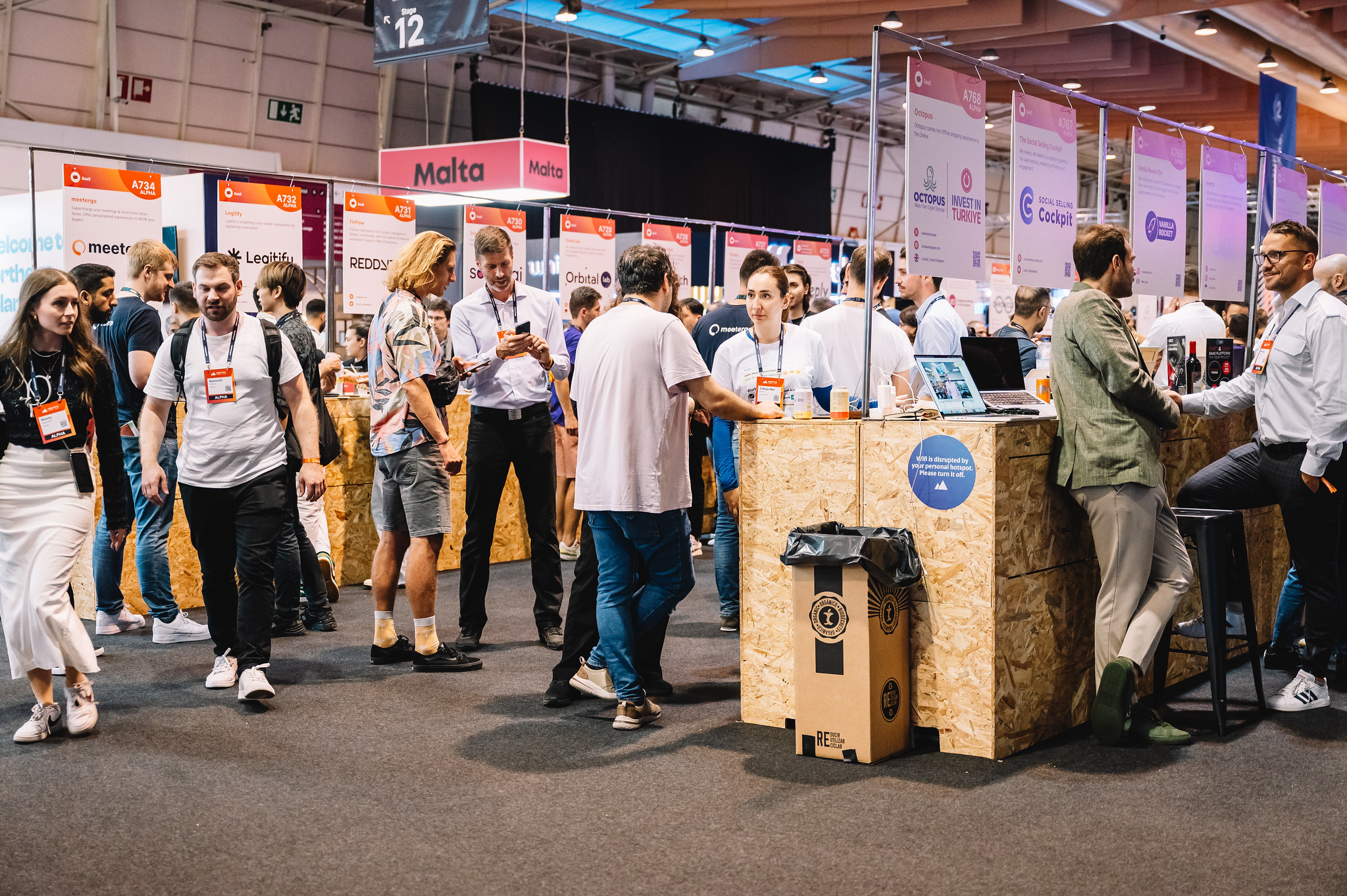
6 tips to help your startup thrive at Web Summit

Want to make the most of our event? Here are some top tips from a few of our most successful startups.
Web Summit provides a huge opportunity for new and established startups to develop their businesses. The question is how best to capitalise on this opportunity.
In our ongoing series of Startup Success stories, many founders have shared how they made the most of our event. Here is just a small sample of the advice they’ve shared on how to get the most out of the Web Summit experience.
Manage your time
Web Summit is a busy three days for all attendees, particularly for startups. Cognivix founder and CEO Daniele Bernardini, who has been to multiple Web Summit events, pointed to the importance of time management.
“Something that I advise myself to do every year – and that I fail to do every year – is that you should start preparing three months in advance,” said Daniele.
“You should start contacting people, checking who is going to be there; who is in the same area as you. What investors do you want to talk to? Research the investors … preparation is the best investment of your time, because once you’re here, it’s too late,” the founder added.
According to Indominus Managed Security founder and CEO René-Sylvain Bédard, research is key to time management: “You don’t actually have time to start learning. You have to go in there and actually know what you want.”
“It won’t be the time once the event starts. There’s too much to do, too much to see. You’ll get lost and you’ll get lost in the overall event, because there’s a ton to do, and a ton of interesting things to do,” said René-Sylvain.
Goals are key
Ukrainian-Austrian startup Pitch Avatar has attended five Web Summit events to date. A veteran of our events, chief revenue officer Viktoriia Abed has developed various winning strategies. Viktoriia believes it all comes down to preparation.
“It’s important to set up real goals and be very focused,” said Viktoriia. “We had a definite vision of who we’d like to meet and followed the plan. In our case, we wanted to meet our potential customers and partners from different industries.”
Taking part in activations such as Startup Showcase allowed Pitch Avatar to show its platform to the tech world. Through the Web Summit app, the startup placed a link to a mini pitch on its profile, ensuring high-quality leads before scheduling meetings.
Once a meeting had been scheduled, Viktoriia would send out reminders in the morning, and when there was no time for a one-to-one meeting, requesters were invited to Pitch Avatar’s stand on its exhibition day.
“On the last day, when we were working at our stand in BETA, we literally had a queue of people waiting to talk to us – due to the hard preparation before – until 3pm, when I had to pitch on stage at Startup Showcase. I lost my voice because I had been pitching without a pause since 10am,” said Viktoriia.
Practise your pitch
Making the most of your time goes beyond conducting research. It’s also vital to have your pitch down perfectly, regardless of whether you’re courting new investors or searching for customers and partners.
“Practise your ‘one-liner’, and make sure you can clearly articulate what you do, who you’re building for, and why it’s impactful in one or two sentences max,” said Joseph Lee, co-founder and CEO of Supademo.
“You realistically only have a few moments to capture your audience’s attention. Your elevator pitch should be memorised, since you’ll be repeating it verbatim hundreds of times,” Joseph continued.
René-Sylvain believes founders should focus on the key questions of whoever they are pitching to: “If someone’s going to get into a long-term business relationship with you, what do they need to know? What’s the actual potential, and do the numbers jive right, left and centre?”
Be open to possibilities
While time management and preparation are key to a successful event, it is important to leave some space for what Verble co-founder Devin van den Berg calls “organised serendipity”.
Devin and fellow co-founder Victor Straatman had gone to Web Summit with relatively open schedules, with no fixed idea of what outcomes they were searching for. “I just went there because it was a great work-related excuse to have a fun week with like-minded entrepreneurs,” said Devin.
Devin and Victor are both Rotterdam-based, and met by coincidence on their flight home from Lisbon when they noticed each other’s Web Summit wristbands. That conversation led them to set up their AI-based speechwriting application together.
Victor’s advice to other entrepreneurs is that “the opportunity is there, but it’s only there if you’re open; looking around; checking what’s there. Go with the flow”.
Bee2Be founder and CEO Simone Ponce felt similarly: “Remember that Web Summit is not just an event; it’s a dynamic ecosystem where ideas flourish, collaborations thrive, and growth opportunities abound. Embrace the diversity of perspectives, be open to innovation, and utilise the platform to amplify your impact.”
Sanders Lazier is founder of Carbonhound – a climate action platform that helps businesses measure and reduce their impact on the climate. While at our Toronto event in 2022, an investor stopped by Carbonhound’s ALPHA booth and struck up a conversation. Despite Sanders organising dozens of meetings in advance of the event, it was this organic meeting that led to a nine-figure pre-seed investment.
Use the app
One of the best tools available to startups attending our event is the Web Summit app. Attendees can create a profile on the app, plan their schedule, and connect with fellow attendees before, during and after the event.
Amin Yazdani, co-founder and CEO at Craver, successfully used the app to schedule more than 40 one-to-one meetings with investors.
“We initially applied through the startup-to-investor matchmaking portal, in which investors get to select the startups they’d most like to meet. I think we met three investors that way. But the other 40 investor meetings came about through us reaching out directly to everybody that had registered as an investor through the app,” said Amin.
Amin contrasted “how easy the app makes reaching out to people” compared to other events. “A lot of other events keep their attendee list very close to their chest and try to profit off of it, but what I like about [this event] is that I could see who was attending and send them a message … We made a lot of lasting connections with investors.”
More than just investment
Many startups attend Web Summit events with one goal in mind: investors. While there are plenty of opportunities for startups to connect with investors, there are a whole range of other opportunities to expand and develop your business.
Our Startup Success stories showcase what these other opportunities are. For example, Indominus Managed Security was able to join an accelerator through our event; Cognivix made a new partnership with JETRO, the Japanese External Trade Organisation; the Verble founders met and launched their new business together; and AI-workflow platform Paillor went from two to 28 customers, and 11,000 daily end-users on its app.
Perhaps the biggest transformation was for Japanese startup Qufooit, which met with the UK trade delegation at Web Summit 2019 and relocated its entire business to Maidenhead in England.
“If I did not exhibit at Web Summit 2019, I would still be in Japan as the CEO of a domestic company. However, now I am living in the UK, expanding my business around the world. This is the evidence of the power of Web Summit,” said Qufooit founder and CEO Kazuo Ikeda, “If I didn’t exhibit at Web Summit, I would have no distribution.”
To make the most of the opportunities Web Summit has to offer, join our startup programme today.
Main image of startups networking at ALPHA startup booths at Web Summit 2023: Sportsfile/Web Summit ((CC BY 2.0))

